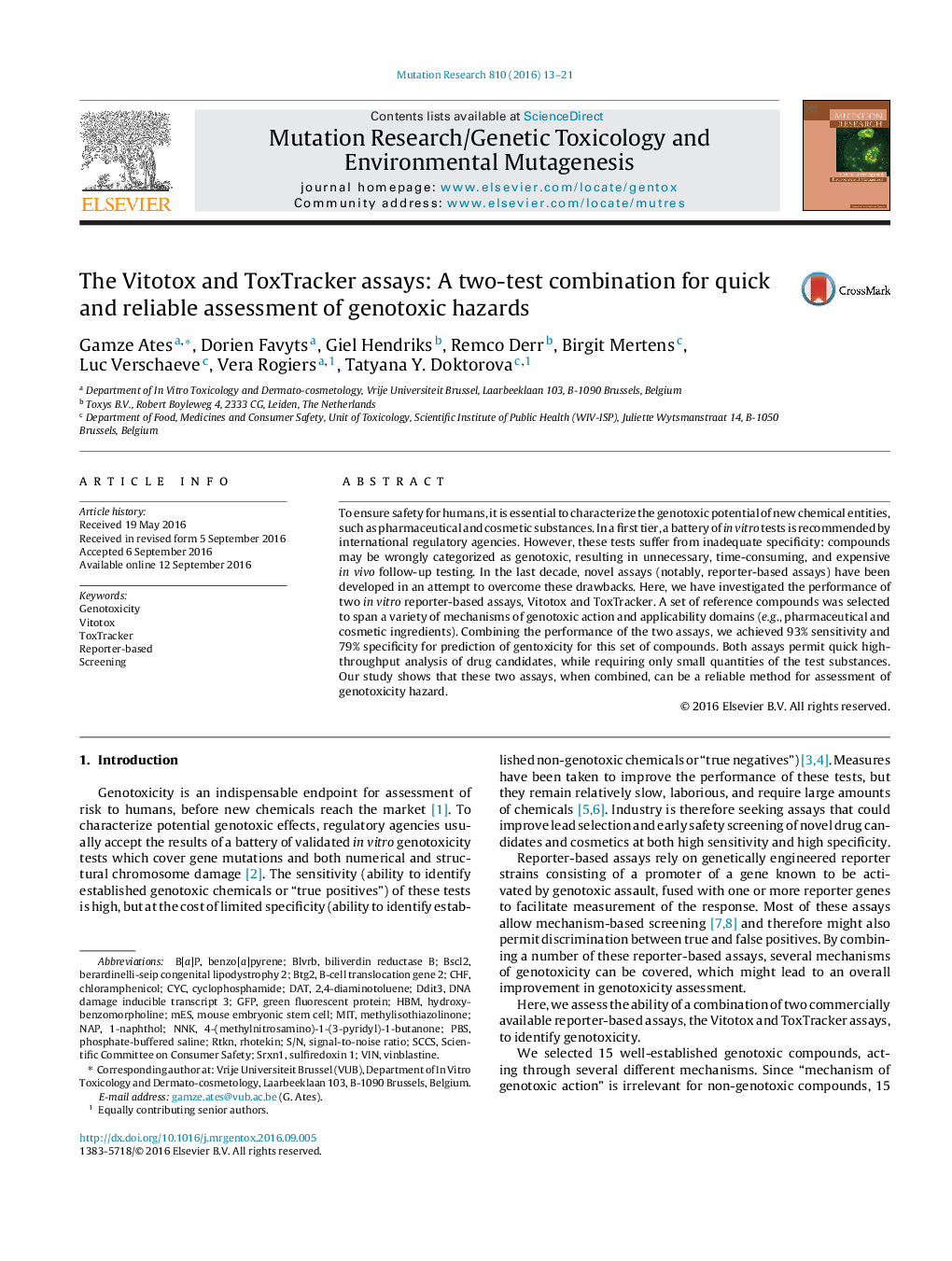| Article ID | Journal | Published Year | Pages | File Type |
|---|---|---|---|---|
| 5528851 | Mutation Research/Genetic Toxicology and Environmental Mutagenesis | 2016 | 9 Pages |
â¢The performance of Vitotox and Toxtracker is tested for genotoxicity assessment.â¢Reference compounds cover broad applicability domain and/or mechanism of action.â¢Both reporter-based assays are reliable tools especially when used as a test battery.
To ensure safety for humans, it is essential to characterize the genotoxic potential of new chemical entities, such as pharmaceutical and cosmetic substances. In a first tier, a battery of in vitro tests is recommended by international regulatory agencies. However, these tests suffer from inadequate specificity: compounds may be wrongly categorized as genotoxic, resulting in unnecessary, time-consuming, and expensive in vivo follow-up testing. In the last decade, novel assays (notably, reporter-based assays) have been developed in an attempt to overcome these drawbacks. Here, we have investigated the performance of two in vitro reporter-based assays, Vitotox and ToxTracker. A set of reference compounds was selected to span a variety of mechanisms of genotoxic action and applicability domains (e.g., pharmaceutical and cosmetic ingredients). Combining the performance of the two assays, we achieved 93% sensitivity and 79% specificity for prediction of gentoxicity for this set of compounds. Both assays permit quick high-throughput analysis of drug candidates, while requiring only small quantities of the test substances. Our study shows that these two assays, when combined, can be a reliable method for assessment of genotoxicity hazard.
